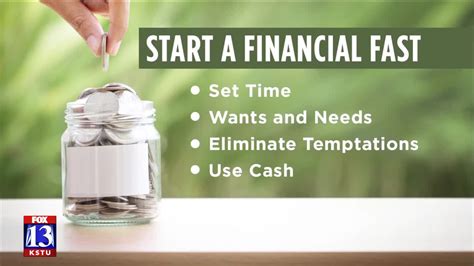Understanding the Silver Price: A Comprehensive Guide

`markdown
Are you looking to understand the intricacies of the silver price? This guide provides a deep dive into the factors influencing the silver price, historical trends, and expert predictions. Whether you're a seasoned investor or just starting, this article will equip you with the knowledge you need to make informed decisions.
What Determines the Silver Price?
Several factors influence the silver price, making it a dynamic and sometimes volatile market. Understanding these drivers is crucial for anyone looking to invest in silver.
- Supply and Demand: Like any commodity, the silver price is heavily influenced by the balance between supply and demand. Increased industrial demand, especially in electronics and solar panels, can drive prices up. Similarly, decreased mining production or disruptions in supply chains can also impact the silver price.
- Economic Conditions: During times of economic uncertainty, investors often flock to precious metals like silver as a safe haven. This increased demand can push the silver price higher. Conversely, during periods of strong economic growth, investment demand for silver may decrease, leading to a price decline.
- Inflation: Silver is often seen as a hedge against inflation. As inflation rises, the purchasing power of fiat currencies decreases, and investors may turn to silver to preserve their wealth, thus increasing the silver price.
- Interest Rates: Higher interest rates can make holding silver less attractive, as investors can earn a return on interest-bearing assets. This can lead to a decrease in demand for silver and a lower silver price.
- Currency Fluctuations: The silver price is typically quoted in US dollars. Fluctuations in the value of the dollar can therefore impact the price of silver in other currencies. A weaker dollar can make silver more attractive to investors holding other currencies, leading to increased demand and a higher silver price.
- The Hunt Brothers Squeeze (1980): One of the most notable events in silver's history was the attempt by the Hunt Brothers to corner the market in the late 1970s. This caused the silver price to skyrocket to nearly \$50 per ounce before crashing spectacularly.
- The Dot-Com Bubble (2000s): During the dot-com boom, interest in precious metals waned, and the silver price remained relatively low.
- The 2008 Financial Crisis: The financial crisis of 2008 led to increased demand for safe-haven assets, pushing the silver price higher.
- The COVID-19 Pandemic (2020): The pandemic and subsequent economic uncertainty led to a surge in demand for silver, driving the silver price to multi-year highs.
- Industrial Demand: The increasing use of silver in electronics, solar panels, and other industrial applications is expected to support the silver price in the long term.
- Investment Demand: Continued economic uncertainty and inflation concerns could drive investment demand for silver, pushing the silver price higher.
- Geopolitical Risks: Geopolitical instability and trade tensions can also influence the silver price, as investors seek safe-haven assets.
- Physical Silver: This includes buying silver bars, coins, and bullion. It offers direct ownership but requires storage and insurance.
- Silver ETFs: Exchange-Traded Funds (ETFs) that track the silver price offer a convenient way to gain exposure to silver without the need to store physical metal.
- Silver Mining Stocks: Investing in companies that mine silver can provide leveraged exposure to the silver price, but it also involves company-specific risks.
- Silver Futures and Options: These are derivative instruments that allow investors to speculate on the future silver price. They are highly leveraged and carry significant risk.
- The silver price is influenced by supply and demand, economic conditions, inflation, interest rates, and currency fluctuations.
- Historical silver price trends provide valuable insights into its potential future performance.
- Analysts predict a gradual increase in the silver price over the next few years, driven by industrial and investment demand.
- There are several ways to invest in silver, each with its own advantages and disadvantages.
Historical Silver Price Trends
Analyzing historical silver price trends provides valuable insights into its potential future performance.
Expert Predictions for the Future of the Silver Price
Predicting future silver price movements is challenging, but analysts use various factors to make informed forecasts.
Strong analysts predict a gradual increase in the silver price over the next few years, driven by these factors. However, it's important to remember that market conditions can change rapidly, and past performance is not indicative of future results.
Investing in Silver: Different Options
There are several ways to invest in silver, each with its own advantages and disadvantages.
Conclusion: Is Silver a Good Investment?
Whether silver is a good investment depends on your individual circumstances, risk tolerance, and investment goals. The silver price is influenced by a variety of factors, and it's important to do your research before investing.
Key Takeaways:
Frequently Asked Questions (FAQs) about Silver Price
Q: What is the current silver price?
A: The current silver price fluctuates constantly and can be found on major financial websites and commodity exchanges. It's always best to check a reliable source for the most up-to-date information.
Q: What are the main drivers of the silver price?
A: The main drivers of the silver price include supply and demand, economic conditions, inflation, interest rates, and currency fluctuations.
Q: Is silver a good investment for beginners?
A: Silver can be a good investment for beginners, but it's important to understand the risks involved. Consider investing in small amounts and diversifying your portfolio.
Q: How is the silver price determined?
A: The silver price is determined by market forces of supply and demand, traded on commodity exchanges around the world.
Q: What factors could cause the silver price to rise?
A: Factors that could cause the silver price to rise include increased industrial demand, economic uncertainty, inflation, and geopolitical risks.
`





